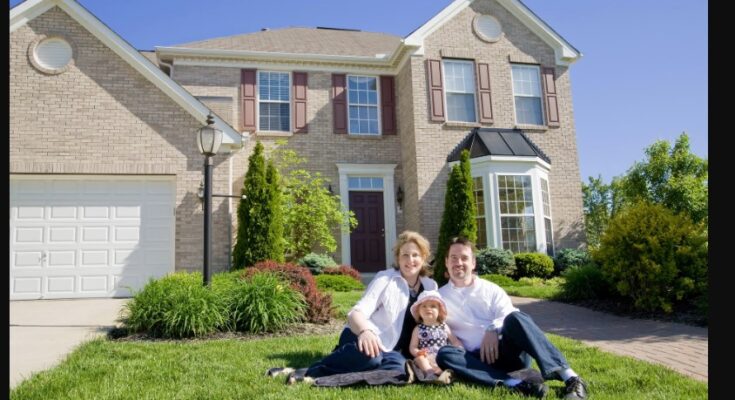Contents
- 1 Introduction To Tall is a House
- 2 1. What Determines the Height of a House?
- 3 2. Typical Heights of Different Types of Houses
- 4 3. Single-Story Houses
- 5 4. Two-Story Houses
- 6 5. Three-Story and Multi-Story Houses
- 7 6. Building Codes and Regulations
- 8 7. Architectural Styles and House Height
- 9 8. Cultural Differences in House Heights
- 10 9. Factors Influencing Home Height
- 11 10. Height Considerations for Attics and Basements
- 12 11. Impact of Roof Design on House Height
- 13 12. Environmental and Aesthetic Considerations
- 14 13. Innovative Designs: Tiny Homes and High Ceilings
- 15 14. FAQs About House Heights
- 16 15. Conclusion
Introduction To Tall is a House
Have you ever wondered, “How tall is a house?”
It might seem like a simple question, but the answer can vary widely depending on various factors. From single-story bungalows to towering multi-story mansions, a house’s height can depend on design preferences, building codes, and even cultural differences.
In this article, we’ll explore the typical heights of different types of houses, the factors that influence these heights, and more.
1. What Determines the Height of a House?
Several factors, including design preferences, building codes, and the number of stories, influence a house’s height.
Local regulations often dictate minimum and maximum heights, while personal preferences can affect the choice of ceiling heights and roof designs.
2. Typical Heights of Different Types of Houses
Single-Story Houses
A single-story house, also known as a bungalow, typically ranges from 10 to 15 feet in height, including the space for the ceiling, the roof, and any attic space.
Two-Story Houses
Two-story houses usually have a height of 20 to 30 feet. The exact height can vary depending on the design, ceiling heights, and roof pitch.
Three-Story and Multi-Story Houses
Three-story houses can range from 30 to 45 feet tall. Multi-story houses, such as townhouses or small apartment buildings, can exceed these heights, often reaching up to 60 feet or more.
3. Single-Story Houses
Bungalows
Bungalows are often characterized by their single-story design, making them ideal for those who prefer living on one level. The height of a bungalow typically includes the ceiling height and roof structure.
Ranch-Style Homes
Ranch-style homes are another common type of single-story house. They usually have slightly higher ceilings and broader layouts than traditional bungalows.
4. Two-Story Houses
Standard Two-Story Homes
Standard two-story homes typically have ceiling heights of 8 to 10 feet per floor, plus additional space for the roof structure. This results in an average height of around 20 to 25 feet.
Split-Level Homes
Split-level homes have staggered floor levels, often resulting in a varied height profile. Depending on the specific design, these homes may appear taller or shorter.
5. Three-Story and Multi-Story Houses
Townhouses
Townhouses are commonly three or more stories tall, maximizing vertical space in urban areas. They can range from 30 to 45 feet or more in height.
Small Apartment Buildings
Small apartment buildings, typically three to four stories high, range from 35 to 50 feet. These buildings often feature higher ceilings on the ground floor for commercial use.
6. Building Codes and Regulations
Local Building Codes
Local building codes play a significant role in determining houses’ maximum and minimum heights. These regulations ensure safety and structural integrity.
Zoning Laws
Zoning laws also impact house heights, especially in urban areas where maintaining a particular aesthetic or skyline is essential.
7. Architectural Styles and House Height
Victorian Homes
Victorian homes often feature high ceilings and steep roof pitches, resulting in taller structures than modern designs.
Modern Homes
Modern homes have simpler roof designs and lower ceiling heights, resulting in shorter overall heights than traditional ones.
8. Cultural Differences in House Heights
Western vs. Eastern Architecture
Western homes often feature higher ceilings and multi-story designs, while Eastern homes may prioritize horizontal space and lower overall heights.
Historical Influences
Historical architectural styles in different regions also influence the typical heights of houses. For instance, colonial homes in the US are often taller than traditional Japanese homes.
9. Factors Influencing Home Height
Ceiling Height Preferences
Homeowners’ preferences for ceiling heights can significantly influence the overall height of the house. Higher ceilings often result in taller homes.
Roof Pitch and Design
The roof’s pitch and design also impact the house’s height. Steeper roofs add to the overall height, while flat roofs result in shorter structures.
10. Height Considerations for Attics and Basements
Attic Spaces
Attic spaces can add to a house’s height, especially if they are designed to be habitable spaces with higher ceilings.
Basements
Basements do not typically contribute to a house’s visible height, but they do add to the overall floor space and can influence the height of the main floors.
11. Impact of Roof Design on House Height
Flat Roofs
Flat roofs result in a lower overall height and are common in modern and minimalist architectural designs.
Gabled Roofs
Gabled roofs, with their steep pitches, add to a house’s height and are common in traditional and Victorian styles.
12. Environmental and Aesthetic Considerations
Natural Light
Higher homes with more stories often allow for better natural light distribution, which can affect design decisions.
View and Privacy
The height of a house can also influence the views available from inside and the level of privacy from neighbouring properties.
13. Innovative Designs: Tiny Homes and High Ceilings
Tiny Homes
Despite their small floor area, tiny homes can have varying heights depending on loft designs and roof pitches. They often maximize vertical space to create a feeling of openness.
High Ceilings
High ceilings can make even single-story homes feel more spacious and luxurious, adding to the perceived height of the house.
14. FAQs About House Heights
How tall is a single-story house?
A single-story house typically ranges from 10 to 15 feet in height, including the roof and ceiling space.
How tall is a two-story house?
A two-story house usually ranges from 20 to 30 feet, depending on ceiling height and roof design.
What factors influence the height of a house?
Factors influencing the height of a house include ceiling height preferences, roof design, local building codes, and architectural style.
Are there regulations on how tall a house can be?
Yes, local building codes and zoning laws regulate houses’ maximum and minimum heights to ensure safety and aesthetic harmony.
How does roof design affect house height?
Roof design, including the pitch and style of the roof, significantly affects the overall height of the house. Steeper roofs add height, while flat roofs result in shorter structures.
15. Conclusion
The height of a house is a multifaceted aspect influenced by design preferences, building codes, and cultural factors.
Whether planning to build a single-story bungalow or a multi-story townhouse, understanding the factors determining house height can help you make informed decisions.
From aesthetic appeal to functional considerations, the height of your home plays a crucial role in its overall design and livability.
By understanding the benefits and features of different house heights, you can make an informed decision that suits your needs and enhances your living experience.
If you gained new insights from this article, explore our blog, Gimkit, for more enlightening content.



